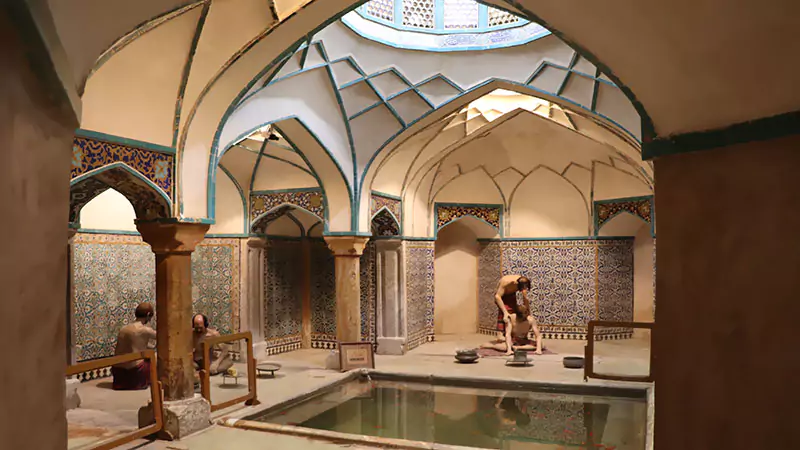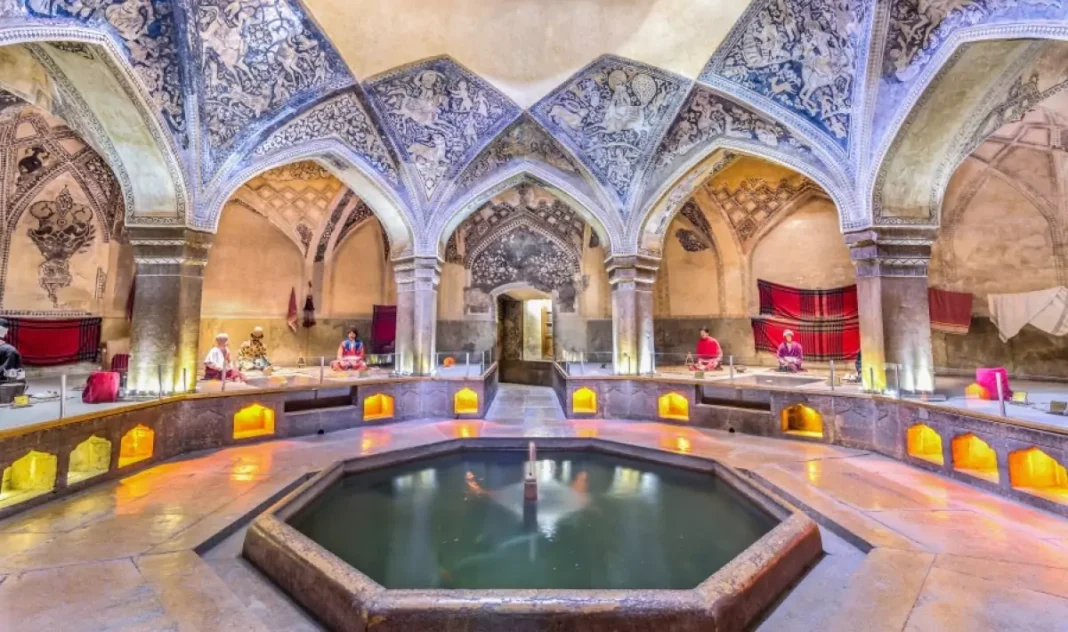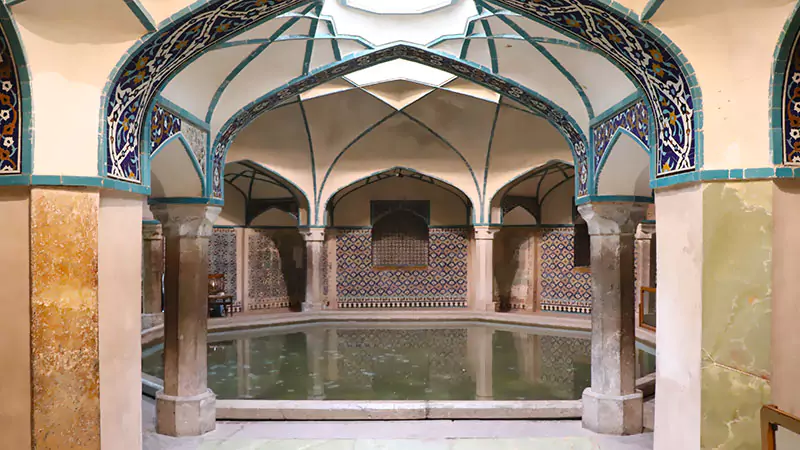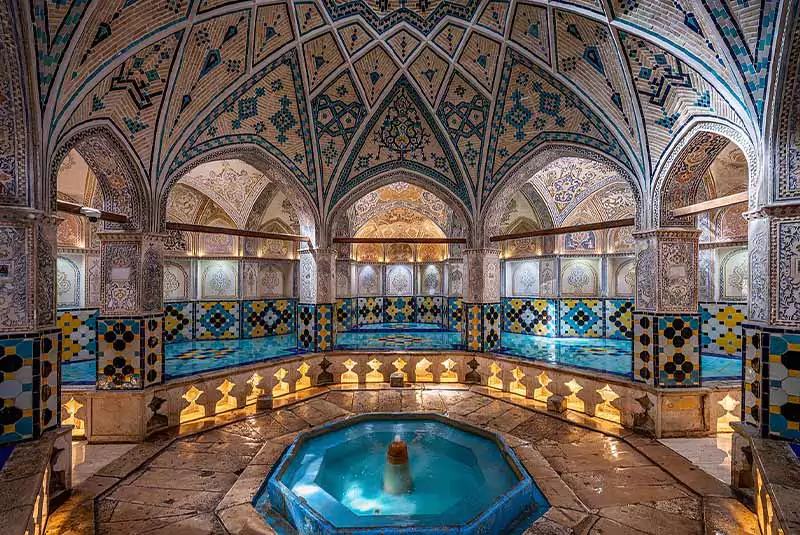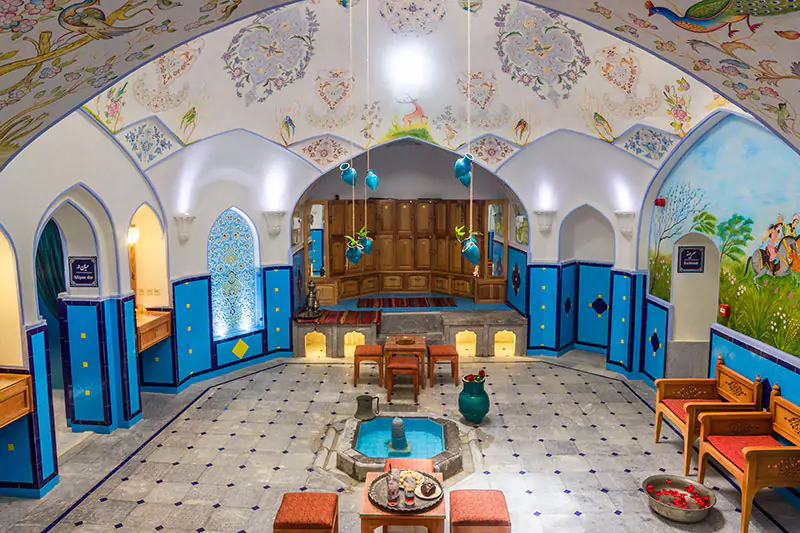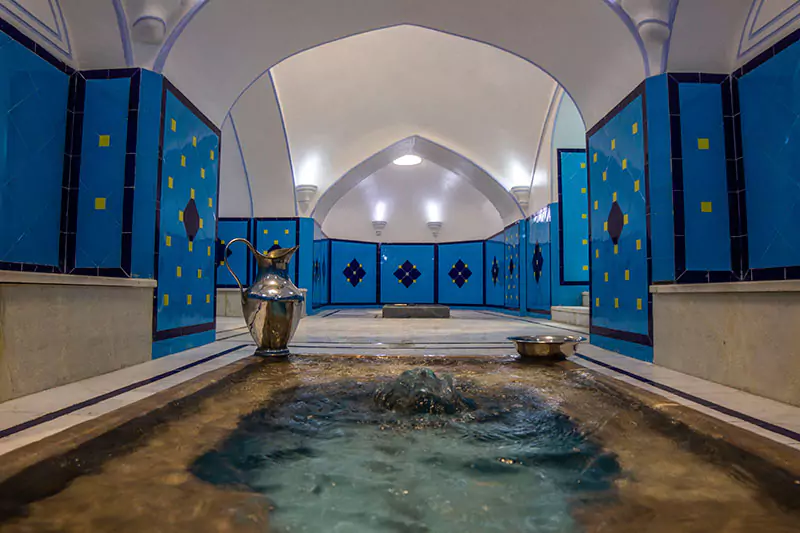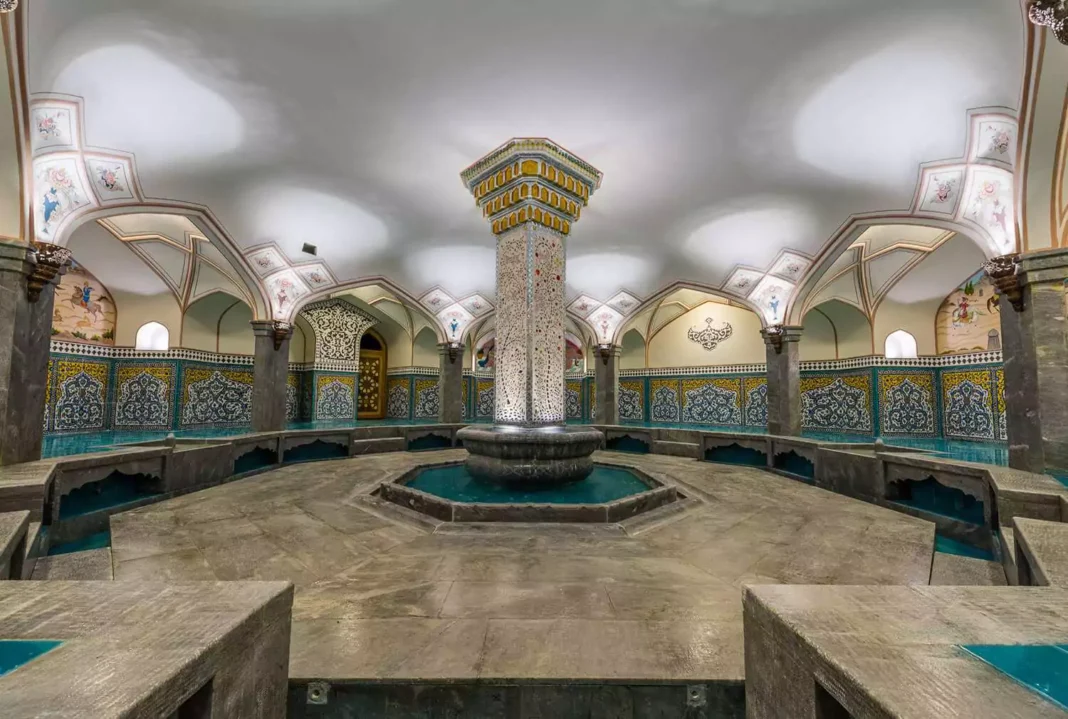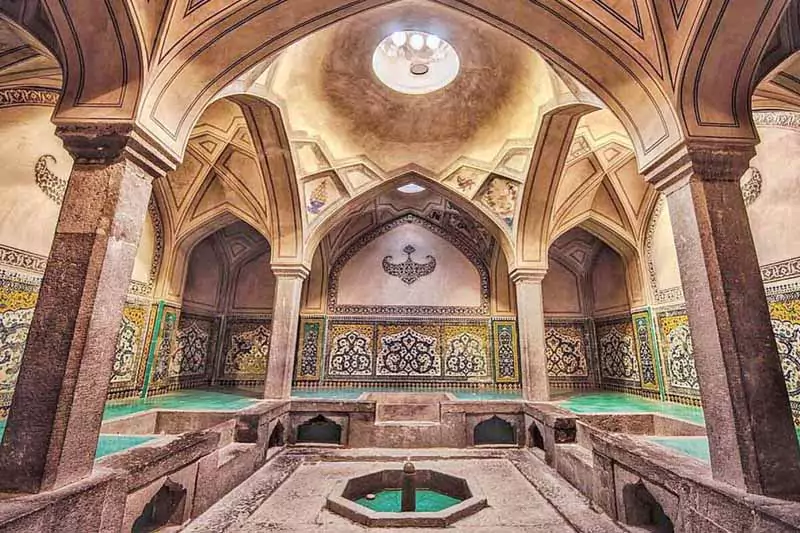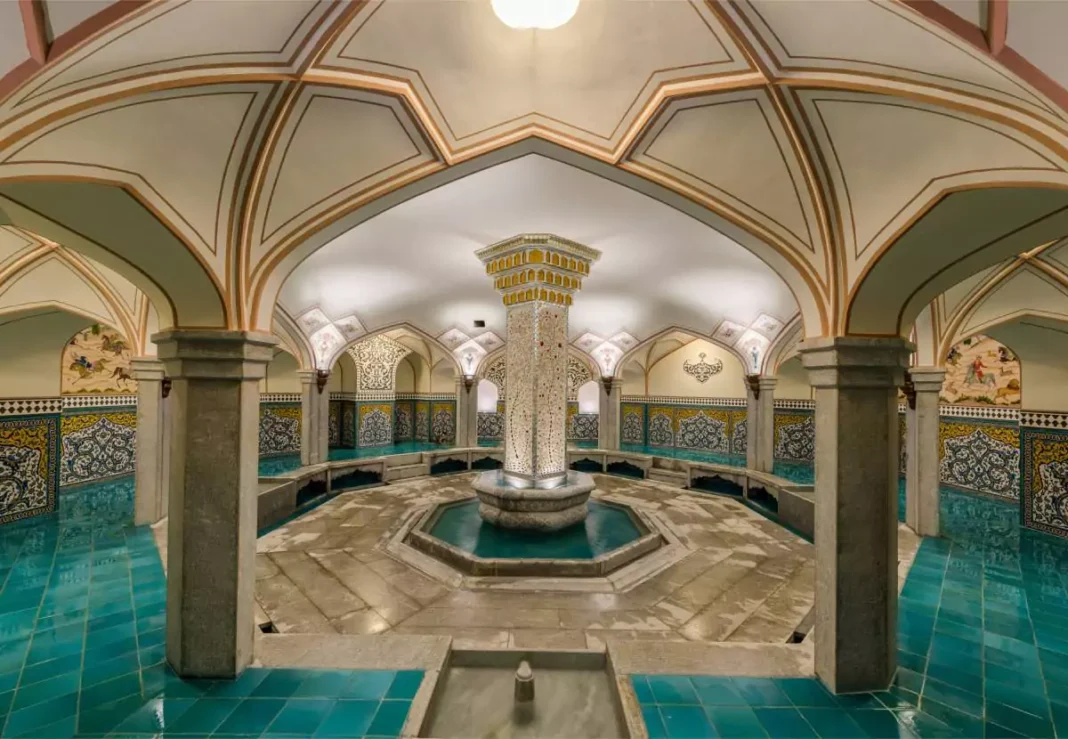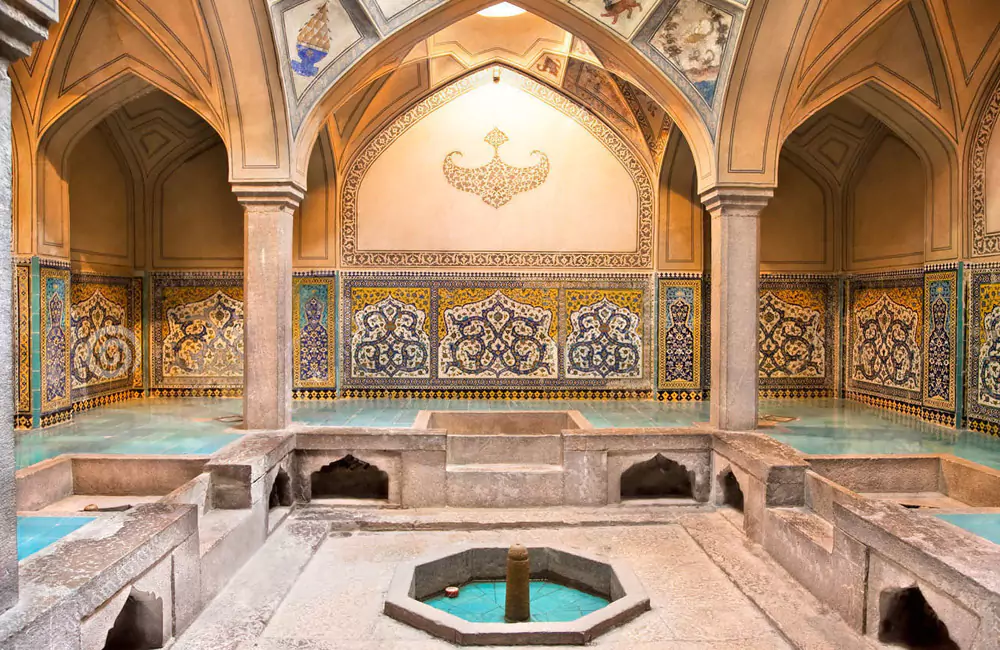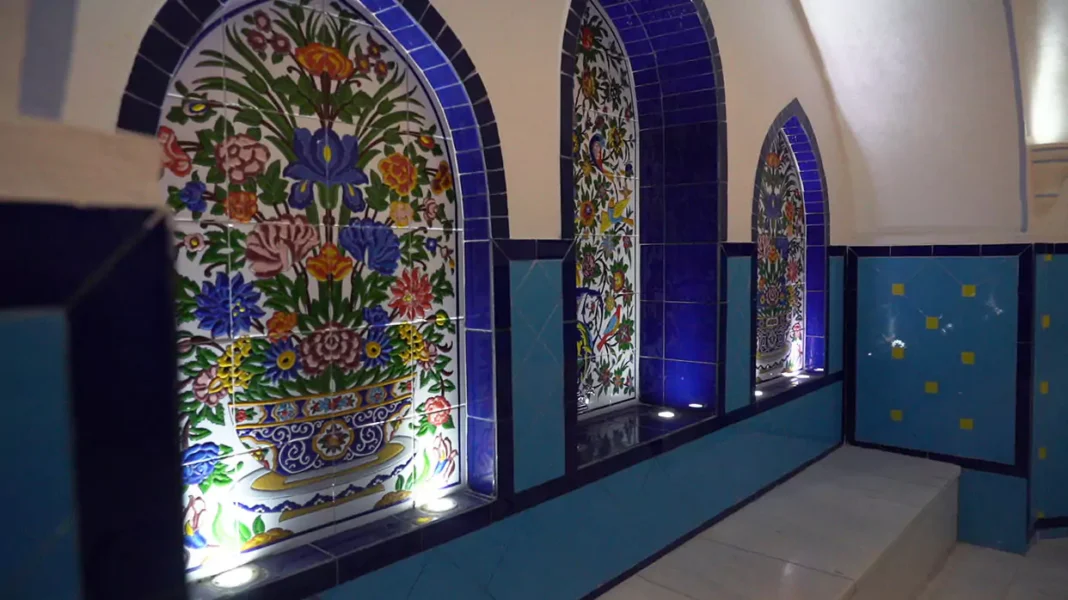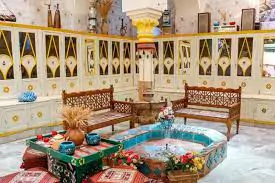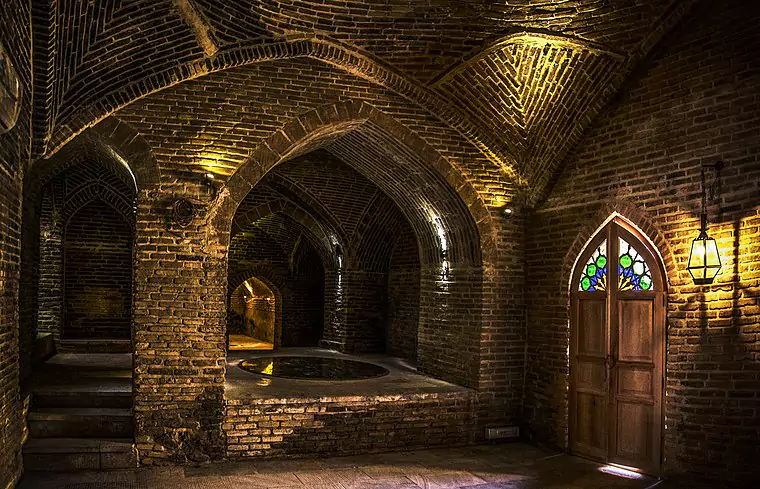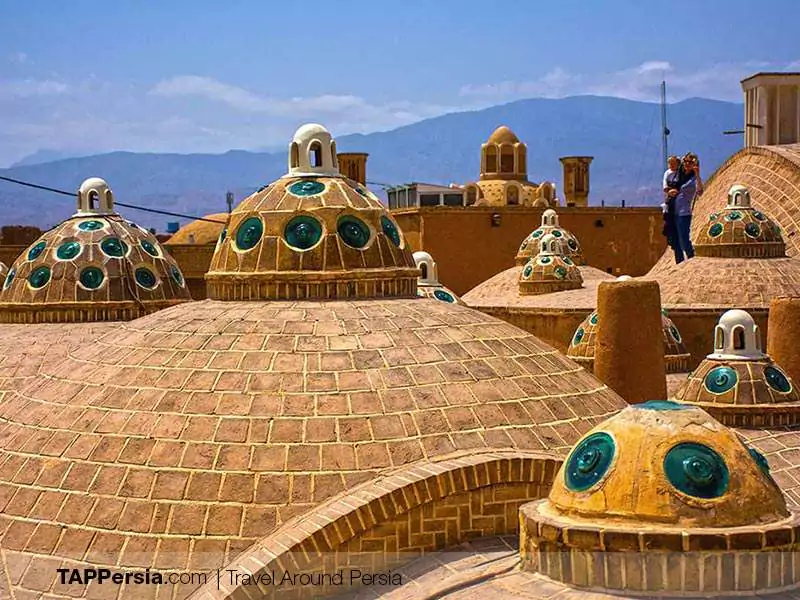A Timeless Tradition: Discovering the Iranian Hammam
The Iranian hammam, a legacy of ancient Persia, offers a captivating blend of cultural immersion and therapeutic rejuvenation. More than just a place to cleanse the body, it’s a sanctuary for the soul, a social hub, and a portal to centuries-old traditions. This guide delves into the enchanting world of Iranian hammams, exploring their history, rituals, and the unparalleled wellness experiences they offer.
A Glimpse into History: The Evolution of Hammams in Iran
Hammams have been integral to Iranian life for millennia, their roots tracing back to the pre-Islamic era. Initially influenced by Roman bathhouses, they evolved over time, incorporating Persian architectural nuances and social customs. During the Safavid era (16th-18th centuries), hammams flourished, becoming ornate social gathering places adorned with intricate tilework and mesmerizing domes. Today, while modern facilities exist, many traditional hammams endure, preserving the essence of this ancient practice.
The Hammam Ritual: A Sensory Symphony
Stepping into a traditional Iranian hammam is akin to entering a tranquil oasis. The experience unfolds in a sequence of spaces, each designed to induce a specific state of relaxation and purification.
- Sarbineh (dressing room): This is where you change into a traditional lungi (wrap) and leave your belongings. It often features a central fountain and comfortable seating, setting a relaxed ambiance.
- Garmkhaneh (hot room): The heart of the hammam, this steam-filled chamber boasts a heated central platform (khat), where you lie down to absorb the warmth and allow your pores to open.
- Khaزینه (hot water pool): A small, deep pool filled with hot water, ideal for soaking and further relaxation.
Beyond Cleansing: The Therapeutic Benefits
The hammam experience transcends mere hygiene; it’s a holistic wellness ritual with numerous therapeutic benefits:
- Detoxification: The intense heat and steam promote sweating, purging toxins from the body.
- Improved circulation: The heat dilates blood vessels, enhancing blood flow and oxygen delivery to tissues.
- Stress relief: The tranquil environment and rhythmic massage techniques alleviate stress and induce deep relaxation.
- Skin purification: Exfoliation removes dead skin cells, leaving your skin soft, radiant, and rejuvenated.
- Respiratory health: The steam can help clear sinuses and relieve respiratory congestion.
Types of Hammam Experiences
Iranian hammams offer a range of services tailored to individual preferences. Here are some of the most popular options:
Traditional Hammam with Massage
This classic experience combines the traditional bathing ritual with a therapeutic massage. After soaking in the garmkhaneh and khaزینه, you’ll be treated to a vigorous massage by a skilled dalkak (masseuse/masseur). Using a combination of kneading, stretching, and acupressure techniques, they’ll work on your muscles, relieving tension and promoting circulation.
Hammam with Keseh and Body Mask
Enhance your hammam experience with a revitalizing keseh (exfoliating mitt) scrub and a nourishing body mask. The keseh removes dead skin cells, revealing smoother, brighter skin. This is followed by the application of a natural body mask, often made with ingredients like clay, yogurt, or honey, to hydrate and nourish your skin.
Private Hammam Sessions
For those seeking exclusivity and privacy, many hammams offer private sessions. This allows you to enjoy the hammam experience at your own pace, with personalized attention from the staff.
Hammam Etiquette: A Guide for First-Timers
While hammam rituals may seem unfamiliar at first, understanding the etiquette ensures a comfortable and respectful experience.
- Dress Code: Wear comfortable clothing that’s easy to change out of. You’ll be provided with a lungi and a towel inside the hammam.
- Valuables: Leave valuable jewelry and accessories in your accommodation. Most hammams provide lockers for safekeeping.
- Respectful Behavior: Maintain a quiet and respectful demeanor within the hammam. Avoid loud conversations and disruptive behavior.
- Photography: Taking photos inside the hammam is generally discouraged out of respect for the privacy of other bathers.
- Tipping: It’s customary to tip the dalkak and other staff for their services.
Hammams Across Iran: A Diverse Tapestry
From historic bathhouses in Isfahan to charming local hammams in Yazd, Iran offers a diverse range of hammam experiences. Here are some noteworthy destinations:
Isfahan: Architectural Marvels and Hammam Traditions
Isfahan, a city renowned for its stunning Islamic architecture, boasts some of Iran’s most magnificent hammams.
- Hammam-e Ali: This 16th-century hammam, located near Naqsh-e Jahan Square, is a masterpiece of Safavid architecture. Its intricate tilework, soaring ceilings, and serene ambiance transport you back in time.
- Address: Near Naqsh-e Jahan Square, Isfahan
- Estimated Hours: 9:00 AM – 9:00 PM
- Contact: +98 31 3222 2114
- Hammam-e Sheikh Bahai: Known for its ingenious heating system, this 17th-century hammam is a testament to Persian engineering prowess.
- Address: Darb-e Imam Khomeini Street, Isfahan
- Estimated Hours: 10:00 AM – 8:00 PM
- Contact: +98 31 3221 6682
Yazd: Intimate Hammams in a Desert Oasis
Yazd, a city sculpted from the desert, offers a more intimate hammam experience.
- Hammam-e Khan: This historic hammam, nestled in the heart of Yazd’s old city, retains its traditional charm. Its intimate setting and friendly staff create a welcoming atmosphere.
- Address: Fahadan neighborhood, Yazd
- Estimated Hours: 8:00 AM – 10:00 PM
- Contact: +98 35 3626 3030
Kashan: A Blend of History and Luxury
Kashan, famed for its historic houses and rosewater production, also offers a unique hammam experience.
- Hammam-e Sultan Amir Ahmad: This beautifully restored 16th-century hammam features stunning stained glass windows and intricate stucco work. It offers a luxurious hammam experience with modern amenities.
- Address: Alavi Street, Kashan
- Estimated Hours: 9:00 AM – 8:00 PM
- Contact: +98 31 5524 4220
Note: These are just a few examples, and numerous other hammams can be found throughout Iran, each with its own unique character and charm.
Planning Your Hammam Visit
To ensure a smooth and enjoyable hammam experience, consider these practical tips:
- Research: Explore different hammams in your chosen destination and read reviews to find one that suits your preferences.
- Booking: For popular hammams, especially during peak season, it’s advisable to book your session in advance.
- Timing: Allow ample time for your hammam visit, as the entire ritual can take several hours.
- Hydration: Drink plenty of water before and after your hammam session to stay hydrated.
- Health Considerations: Consult your doctor if you have any health concerns, such as heart conditions or high blood pressure, before visiting a hammam.
Hammams and Iranian Culture: A Social Tapestry
Beyond their therapeutic benefits, hammams have played a significant role in Iranian social life for centuries. They served as gathering places for women, where they could socialize, share stories, and celebrate special occasions. Hammams were also important for pre-wedding rituals, where brides would undergo cleansing and beautification ceremonies. While the social function of hammams has evolved in modern times, they still hold a special place in Iranian culture, representing a connection to the past and a source of communal well-being.
The Hammam Experience: A Traveler’s Perspective
“Stepping into the hammam was like stepping back in time,” recounts Sarah, a traveler from the UK. “The steamy air, the soothing sounds of water, and the intricate tilework created a truly magical atmosphere. The massage was incredibly relaxing, and I left feeling completely rejuvenated, both physically and mentally.”
Another traveler, David from Australia, shares, “The hammam was a highlight of my trip to Iran. It was a fascinating cultural experience, and I learned so much about Iranian traditions. The keseh scrub was intense but invigorating, and my skin felt amazing afterward.”
These testimonials illustrate the transformative power of the hammam experience, offering a unique blend of cultural immersion, relaxation, and therapeutic benefits.
Embrace the Hammam Journey
A visit to an Iranian hammam is an invitation to embark on a journey of self-discovery and cultural immersion. It’s an opportunity to connect with ancient traditions, purify your body and mind, and experience the true essence of Iranian hospitality. So, step into this world of steam, serenity, and rejuvenation, and allow the hammam to transport you to a realm of tranquility and well-being.
Visual Aids: Enhancing the Hammam Narrative
To further enrich the reader’s understanding of the hammam experience, consider incorporating the following visual elements:
- Infographic: A visual representation of the hammam ritual, outlining the different stages and their benefits.
- Photo Gallery: A collection of images showcasing various hammams across Iran, highlighting their architectural diversity and ambiance.
- Video: A short video depicting the hammam experience, featuring interviews with travelers and locals, showcasing the cultural significance and personal testimonials.
By integrating these visual aids, you can create a more engaging and informative experience for potential travelers, inspiring them to embark on their own hammam journey.


